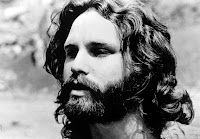 |
| The Kubrick glare |
From about 1960 to 1970, film director Stanley Kubrick could do no wrong. He fed off the sixties zeitgeist with vampiric cunning—intellectual, cynic, craftsman, always detached, always so mindful of the light.
His best films are about death—or seen through a different lens—about life’s absurdity. He didn’t create heroes or happy endings. His films are scripted thesis.< Does thought drive emotion, or vice-versa?> Stanley’s films are top-heavy with thought—but unlike the grumpy Jean-Luc Godard, who enjoyed his salad days at about the same time, Kubrick never hits you on the head with a book.
If you’re looking for the key to Stan’s mind, you might find it at the bottom of a magician’s trunk, or hidden under a chess board. The general sterility of his sets tricks you into believing ‘here’s a serious artist’ , but it is indeed a trick. Above all else, he is a humanist, and like others of his ilk, wasn’t too crazy about humans, at least their bodies.
So—similar to Hitchcock, actors never did that well in his films. Only two or three performances stand out. It’s no coincidence that his most memorable character is a computer.
Here’s killer Kubrick:
- Lolita (1962)
- Dr. Strangelove or: How I Learned to Stop Worrying and Love the Bomb (1964)
- 2001: A Space Odyssey (1968)
- A Clockwork Orange (1971)
After ‘Clockwork’, one got the feeling that Kubrick wasn’t making the films that he wanted to – he was just keeping the wheels in motion with goofy stuff like ‘Barry Lyndon’ and ‘The Shining’. His final film, ‘Eyes Wide Shut’ is disturbing, given that the same talent once gave us ‘2001’.
Today, Kubrick enjoys legions of diehard fans that have sanctified every frame of his opus. He was the kind of guy who could inspire such devotion. Only an artist who tells the Truth, his own Big Truth in his own Time, ever reaches that rarified stratum where angels dispense the mixed blessing of immortality.
And what is Kubrick's Big Truth? It's plays on the other side of the screen.
His best films are about death—or seen through a different lens—about life’s absurdity. He didn’t create heroes or happy endings. His films are scripted thesis.< Does thought drive emotion, or vice-versa?> Stanley’s films are top-heavy with thought—but unlike the grumpy Jean-Luc Godard, who enjoyed his salad days at about the same time, Kubrick never hits you on the head with a book.
 |
| "How you doing HAL?" |
So—similar to Hitchcock, actors never did that well in his films. Only two or three performances stand out. It’s no coincidence that his most memorable character is a computer.
Here’s killer Kubrick:
- Lolita (1962)
- Dr. Strangelove or: How I Learned to Stop Worrying and Love the Bomb (1964)
- 2001: A Space Odyssey (1968)
- A Clockwork Orange (1971)
 |
| The Composer & Composition |
Today, Kubrick enjoys legions of diehard fans that have sanctified every frame of his opus. He was the kind of guy who could inspire such devotion. Only an artist who tells the Truth, his own Big Truth in his own Time, ever reaches that rarified stratum where angels dispense the mixed blessing of immortality.



































